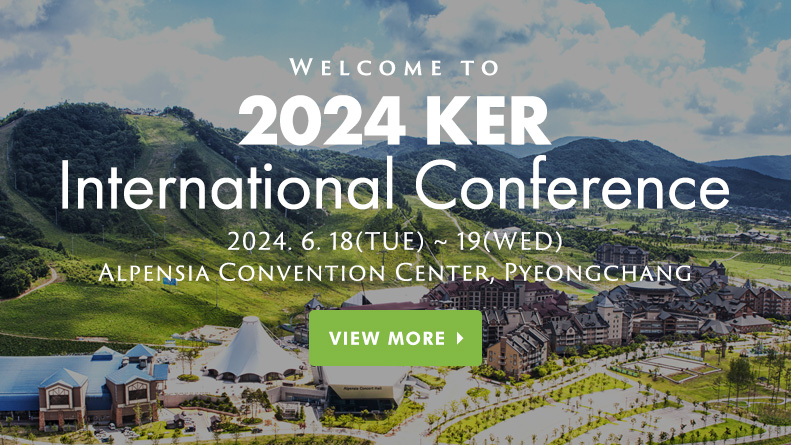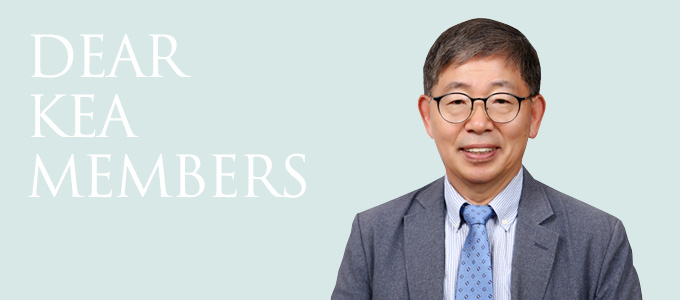Introduction & History

The Korean Economic Association was launched in Pusan on November, 30, 1952.
KOREAN JOURNAL OF ECONOMIC STUDIES
Year 2024 / Vol 72 / No 2
This study evaluates the economic impacts of climate change on the Korean economy, encompassing both climate-related damages and the costs of carbon abatement. Employing a probabilistic approach, the analysis incorporates uncertainty across three significant factors identified in the literature: long-term population and GDP forecasts, climate damage functions, and the social discount rate. The findings show that the overall impact of climate change on the Korean economy amounts to 503 trillion Korean Won (KRW) when implementing optimal economic and climate policies. Furthermore, the ambitious carbon reduction targets set by the Korean government, such as the 2030 Nationally Determined Contributions (NDC) and the 2050 Net Zero goals, significantly escalate economic costs by three to five times (to 1,539 and 2,517 trillion KRW, respectively), primarily due to substantial short-term carbon abatement expenses. However, the extensive uncertainty surrounding these estimates suggests that one cannot definitively label the rapid carbon reduction targets as inefficient. This highlights the necessity of fostering discussions on optimal climate policies that are in harmony with economic growth amidst significant uncertainty. The study also underscores the crucial role of supporting research on climate change to reduce this uncertainty. The analysis employs the RICE model, a widely recognized climate-economy integrated assessment model based on optimal growth theory.
Year 2024 / Vol 72 / No 2
The employment encouragement system targeting vulnerable groups, represented by the mandatory employment initiative for these groups, is part of the labor market redistribution policy that supports the employment of vulnerable groups in the labor market to aid in their self-reliance. However, deadweight loss occurs when vulnerable workers are employed at wages higher than their productivity. In other words, the introduction of the employment encouragement system for vulnerable groups leads to a conflict between inefficiency and redistribution. In markets where both profit and social enterprises coexist, the introduction of a mandatory employment system for vulnerable groups typically results in a reduction in social welfare compared to situations without such a system. On the other hand, applying a floor-and-trade method, which allows trading rights for the employment of vulnerable workers among enterprises, can reduce deadweight loss of social welfare compared to a system with only mandatory employment for vulnerable groups. This study suggests that the introduction of a social performance trading system can lead to appropriate levels of efficiency and redistribution outcomes for individual enterprises through market-driven transactions.
The Effects of Population Aging on Tax-Benefit Structure
Year 2024 / Vol 72 / No 2
This paper examines the effect of population ageing on Korean tax-benefit structure. This paper estimates a simple net tax function using National Survey of Tax and Benefit (NaSTaB), controlling for changes in the household head’s age structure. We find that the progressivity of the net tax function more than doubled between 2007 and 2019, while about 30% of the change accounted for by population ageing. The effect of population ageing on the progressivity is mainly through government transfers. We also find that population ageing explains about 40% of the rise in the estimated income redistribution effect of Korean tax-benefit structure.
KOREAN ECONOMIC REVIEW
Effects of Initial Labor Market Conditions on Job Polarization: Evidence from South Korea
Year 2024 / Vol 40 / No 2
This paper investigates the extent to which initial conditions in the labor market influence the progress of job polarization in Korea. In particular, we compare the following two competing hypotheses: a specialization hypothesis and an inter-industry wage differentials hypothesis. Our findings indicate that job polarization is pronounced in industries that have historically relied on routine tasks and have experienced a significant increase in ICT capital intensity between 2000 and 2019. By contrast, initial inter-industry wage differentials are not associated with job polarization in Korea during the same period.
Spatial Panel Analysis of Ambient Air Pollution in Korea
Year 2024 / Vol 40 / No 2
This study investigates the underlying drivers behind air quality pollution in Korea by using spatial panel analysis. Specifically, we consider the local and transboundary effects of economic, climatic, and geographical factors leading to the heightened presence of fine particulate matter (PM2.5). Furthermore, our study expands its scope beyond national boundaries to include an evaluation of external sources that contribute to elevated pollution levels within Korea. Consequently, this research adopts a multilevel approach to assess the within and outer factors of air pollution in Korea. Our analysis is based on a spatial panel dataset spanning all districts of Korea by incorporating satellite-based air pollution, meteorological, and geographic information for 2010–2016. Empirical results indicate that air pollution degrades the air quality in other cities and the overall national ambient pollution as well. Moreover, empirical results from the general nesting spatial (GNS) specification of spatial interaction suggest that the impacts of economic and climatic factors on air pollution are substantial. In addition, our analysis incorporates cross-country spatial effects of air pollution, which reveals a significant transboundary spillover effect. Furthermore, a deeper analysis of spatial heterogeneity underscores intriguing disparities in the impact estimates. Changes in domestic and foreign factors in the northwest region are linked to a more pronounced diffusion of pollution to multiple cities in contrast to the impacts originating from the southeast.
How Much Do Prices Respond to Demand and Supply Shocks?
Year 2024 / Vol 40 / No 2
This paper presents a theoretical examination of price responses to movements in demand and supply where firms face either unwanted inventories or stockouts in each period. The response mechanism consists of two complementary motives that arise when operating under uncertain business environments. To an increase in demand, a firm has a motive to lower its price reflecting lower effective marginal costs but also has another motive to raise its price to rebalance expected marginal revenues associated with two distinct demand states, unwanted inventories and stockouts. These two motives cancel out each other at optimum, resulting in a limited response of prices to demand shocks. To a cost-push shock, the firm has a motive to raise its price reflecting higher effective marginal costs for a given output level and is further prompted to raise prices reflecting a higher expected value of unit inventory. The two motives push prices up in the same direction, resulting in a large response of prices to supply shocks.
KOREAN ECONOMIC FORUM
The Bank of Korea’s Policy Response during the High Inflation after COVID-19
Year 2024 / Vol 17 / No 1
Like other major economies, Korea was faced with unexpected high inflation after the pandemic. In response, the Bank of Korea continued its tightening stance in order to stabilize inflation, including the most rapid and substantial series of policy rate hikes in history, moving from 0.5% to 3.5%. Throughout this process, the BOK encountered various policy challenges, such as a sharp currency depreciation and financial stress, from which the bank gained many valuable insights including policy cooperation with the government, labor market conditions, responses to currency depreciation, policy measures for financial stability, institutional improvements for financial stability, and policy communication.
Aging and Inequality of Income and Consumption in Korea
Year 2024 / Vol 17 / No 1
This article estimates the effects of age, birth cohort, and survey year on income and consumption inequality in Korea using the Household Income and Expenditure Survey from 1990 to 2022. According to the results, inequality increases with age, and in particular, in the case of income, this age effect becomes larger as people become older. This is because, unlike developed countries with mature pension systems, inequality in Korea has actually increased due to the large number of people who have no or minimal pension after retirement. The effect of birth cohort on consumption inequality is U-shaped, showing a downward trend in inequality up to the birth cohort in the 1970s and the opposite trend thereafter. It is found that inequality among the children’s generation increases as the parents’ generation, which accumulated wealth through a period of rapid growth, increases gifts to their children. Furthermore, I estimate the inequality effects of major macroeconomic variables while controlling for these three time-related variables. In the case of income, the unemployment rate increases inequality and the employment growth rate decreases. The effect of opening to the outside world is that trade increases inequality, but foreign direct investment has the opposite effect of inflow and outflow. Variables related to financial development and income redistribution was all found to have lowered inequality. These effects all depend on age and appear to increase with age.
Year 2024 / Vol 17 / No 1
This study introduces a machine learning method (DML) recently used for causal analyses on labor market issues and presents the results of applying DML to Korea’s vocational training data. Voluminous studies have estimated the effect of training on employment and they have come up short of consensus. The DML’s flexibility in setting relationships of variables may help to avoid problems related to model specification. The DML’s properties of the debiasedness and robustness may also provide what the reasonable range of training effects should be. In addition, the paper attempt heterogeneous treatment effects, which will be informative to policy implementation.





